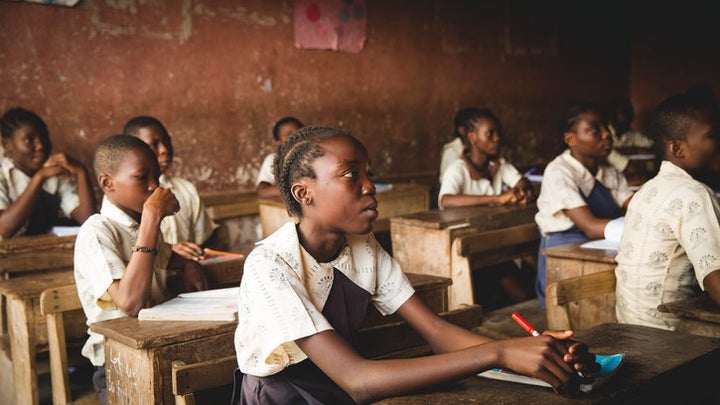Girls’ education is one of the most powerful things that any nation can invest in, because it creates large and lasting social and economic benefits. Girls who are well-educated go on to lead more empowered, prosperous lives. They delay pregnancy until they are older, affecting maternal and infant mortality rates. And they raise healthier children, creating a virtuous cycle with inter-generational benefits.

Globally, if all girls completed primary school, the number of maternal deaths would be cut by two-thirds, the number of child marriages would drop by 14 percent, infant mortality would fall by 15 percent, and 1.7 million children would avoid the stunting of malnutrition.
The Haitian education system is characterized by high costs and unequal access to schools. Across the country, girls and poorer children have higher drop-out rates.
Writing for Copenhagen Consensus, Economist-Planner and Project Analyst in the Haitian Public Investment Department, Ministry of Planning and External Cooperation Mélissa Torchenaud has written a new research paper that investigates the costs and benefits of improving girls’ education access.
The paper is part of the research project, Haiti Priorise. In April, an Eminent Panel of world-class economists and development experts from Haiti and abroad will meet in Port-au-Prince, review all of the new research, and identify priorities.
Torchenaud turns to international examples of how to invest in girls’ schooling to target those most in need. Some countries have set up scholarships for underprivileged girls. In Bangladesh, rural girls can receive a scholarship if they go to school regularly, get good marks and do not get married. This has led to enrolment rates for girls and boys becoming equivalent. Brazil, Kenya and Nicaragua have also achieved promising results with scholarship programs.
She proposes a Haiti Girls’ Scholarship program that would take place over a period of 10 years. During this period, the ministry of education would pay for tuition and the supply of teaching materials to a group of rural girls admitted in secondary 1 until the end of their traditional studies – a period of 4 years for each girl.
To stay in the scholarship, recipients must keep good marks and attendance.
Like all of the research papers in Haiti Priorise, Torchenaud examines the proposal using cost-benefit analysis – a method that allows for the comparison of social, environmental, and health costs and benefits of contrasting policy options.
The average cost for each scholarship, per year, would be around 30,000 gourdes (around $430) for things like tuition, uniforms, and teaching materials.
Torchenaud considers the fact that the girls who stay in school could otherwise have tried to get a job, with about one-third succeeding. On average this means they forgo about 28,000 gourdes ($400) in income. Including this ‘lost’ income and some program costs, the total cost per year runs to 67,000 gourdes per student ($970). The total cost to reach 6,583 girls over 4 years would be 7.7 billion gourdes (around $110 million).
The benefits are numerous. For each girl, the wage increase from each additional year of schooling will add up to 262,000 gourdes ($3,800) across her lifetime. As the girl gets one year more education, the risk of her children dying early declines by almost 10 percent. More benefits will accrue because more education will decrease the risk of HIV infection, teen pregnancy and maternal mortality rates. It will also improve the nutrition in the next generation of children.
Adding up all such health and economic benefits, the total benefit Haitian society from giving one girl an extra year of schooling is 347,000 gourdes ($5000).
About 15 percent of recipients would have stayed in school anyway, and around one in ten will drop out. Accounting for these factors, every gourde spent on improving girls’ school retention through a scholarship for rural girls would have benefits to society worth 4.4 gourdes.
While it has high returns to Haiti, this scholarship program would only respond to one aspect of the challenges facing Haitian education. Other research papers in the Haiti Priorise project will look at how to improve primary schooling more generally, as well as pre-school education.
And of course, there are many other challenges – from energy to health to infrastructure – competing for the same resources. With research papers across all of these areas, Haiti Priorise aims to prompt debate and discussion about where to spend scarce resources to do the most good first.
But this research definitely makes a strong argument for prioritizing keeping girls in school.
